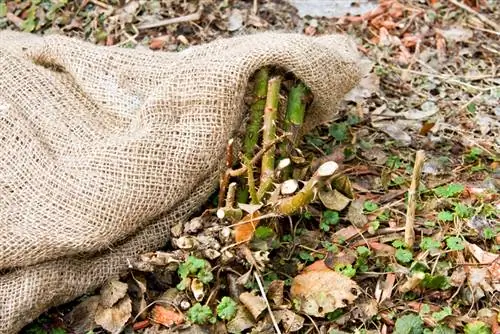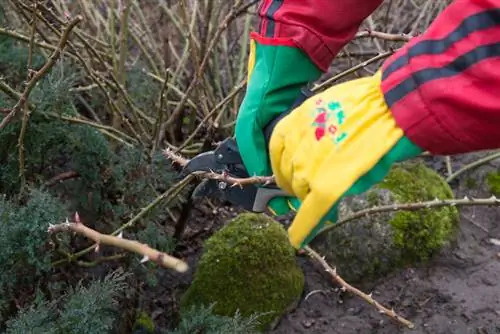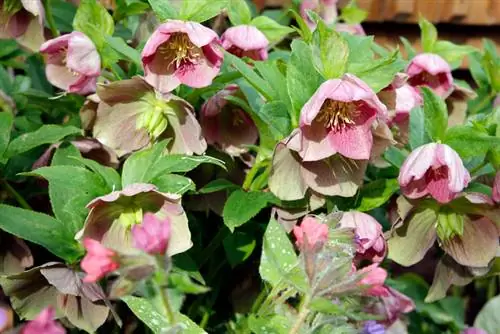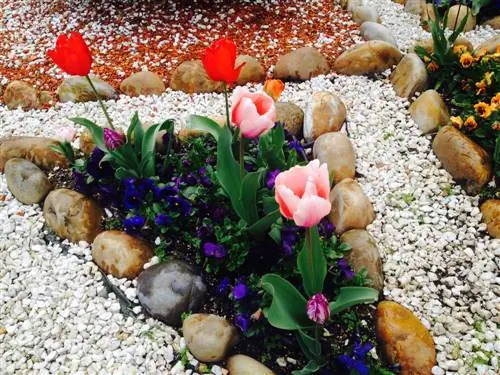- Author admin [email protected].
- Public 2023-12-16 16:46.
- Last modified 2025-01-23 11:20.
Roses can be removed from their winter protection when the ground is frost-free and has already warmed up slightly. It is best to choose a day with an overcast sky so that the plants can acclimatize in peace.
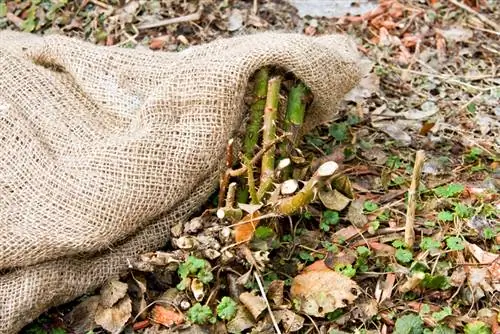
When should you pile up roses?
Roses can be removed from winter protection and piled up when the ground is frost-free and has warmed up slightly. This happens in milder regions when the hazelnut is blooming or in harsh areas when the forsythia is blooming. Look for shoots that are at least 10 cm long.
Dig off roses planted in autumn earlier
The cover with fir or spruce branches can be removed in March, although the accumulated soil still remains. Depending on the climate zone, in milder regions the heaping takes place either with the hazelnut blossom or, if you live in an area with a harsher climate, together with the forsythia blossom. But you can also depend on the budding that has already occurred: If the rose already has several new shoots about 10 centimeters long, you can pile them up.
When roses need longer protection
Roses planted in autumn and older roses (and therefore more established in their location) may be removed from their winter protection earlier than bare-rooted specimens planted in spring. The rule for spring plantings is that they must remain piled up for at least another four weeks. The measure is less intended to protect against cold, but rather to protect the plant from drying out.
Leaf mulch is not suitable as winter protection for roses
Many hobby gardeners use leaves to protect roses from winter frost. Although it is indeed nice and warm under such a cover of leaves (which usually also attracts mice), fungal spores, especially star soot, can also overwinter well there. For this reason, roses should not be covered with leaf mulch, but rather with pine branches if possible. Spruce twigs are also suitable, but the protection does not last very long: the branches lose their needles quite quickly.
Further rose care in spring
After digging, further rose care takes place. The demanding plants also need to be cut back and fertilized in early spring so that the new growth becomes strong and abundant flowering can be expected. Spring pruning is not the same for every rose, but depends on the variety - some roses need more vigorous pruning, while others just need to be cared for. The annual starting fertilization is best done with organic fertilizer (€11.00 on Amazon), whereby - if you pile up your roses with compost and/or manure - you should distribute it thoroughly in the bed and work it into the soil. Here, fertilization must be carried out early, as the active ingredients from organic fertilizer are only available to the plant after some time.
Tip
So that you don't damage the first tender shoots of the rose when digging, spread the soil carefully with your fingers. Then distribute them evenly throughout the bed with a rake.

